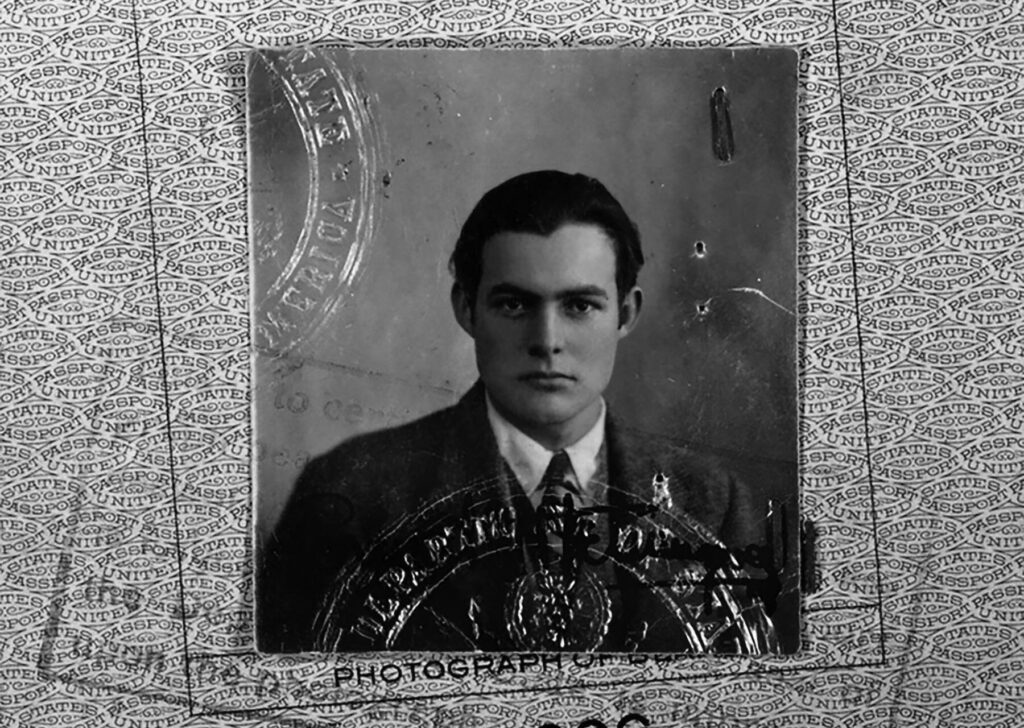A tantalizing pronouncement appears at the start of We Were the Bullfighters: “This is a work of fiction, except for the parts that are true.” A debut novelist and a member of the Hemingway Society, Marianne Miller draws upon the lives of Ernest Hemingway and a man known as the “Jesse James of Canada,” the notorious bank robber Norman “Red” Ryan. She crafts an adventurous and unexpected work of historical fiction that opens a window into the brief time Papa spent working for the Toronto Daily Star in the early 1920s.
The immersive first chapter describes a dramatic prison break from Kingston Penitentiary in September 1923. Five inmates — led by Ryan — torch a barn inside the complex. Under the cover of billowing black smoke and chaos, they scale the prison’s twenty-foot stone wall. After commandeering a car on the other side, the escapees are chased through the downtown by armed guards. They disappear into the bush on the outskirts of the city and begin mapping their route along Lake Ontario and on to Detroit. Hemingway, a new staff reporter for the Star, is quickly dispatched to Kingston, several hours away, to cover the story.
The novel’s fifty-seven short chapters alternate between the perspectives of Hemingway and Ryan. Hemingway is an unhappy journalist who dreams of abandoning his stable job to return to Paris and write a novel. He spends his four months at the Star obsessing over Ryan’s penchant for risk taking. Meanwhile, Ryan leads his small group across southern Ontario and into the United States. After a heist in Minneapolis, he is arrested and brought back to Kingston. Days before Hemingway finally leaves Canada for France in January 1924, he attends Ryan’s trial. Together, their interlocking narratives reveal the young writer’s strained search for artistic freedom.

From the passport Ernest Hemingway used in 1923 — the year he briefly returned to Toronto.
Alpha Historica; Alamy
Miller’s omniscient narrator moves seamlessly into the minds of the troubled protagonists. On a gloomy day in his hotel, Hemingway recalls his first trip to Pamplona, Spain, to witness the running of the bulls: “The problems of life come at you like a bull sometimes, huge and terrifying, skidding and snorting behind you while you run on cobblestones, slick, shiny, soaked with rain.” Miller captures Hemingway’s unrest during this chapter of his life, along with his observational prowess. “From his pocket he pulls out the square of sugar from the dining room,” she writes, “the compacted essence of childhood winter memories.” She also reveals Ryan’s innermost thoughts through his persona and infamous experiences. While receiving a hand job from a prostitute, for example, “he can feel the tension starting to leave his body, floating off like the smell of gunpowder after you’ve pulled the trigger.”
The Hemingway Collection at the John F. Kennedy Presidential Library and Museum in Boston has the ticket stub for the train Hemingway took from Toronto to Kingston, and curious readers can find his articles in the Toronto Star digital archives. Miller was intrigued by the traces of the writer’s stint in Canada. In 1923, he and his first wife, Hadley Richardson, moved to Toronto for the birth of their first child. They were attracted by the city’s reputation for excellent medical care and by the prospect of a regular salary. During their brief time in Canada, as Miller accurately depicts, Hemingway decided to commit his life to fiction, even if it meant uncertain income and instability for his family. “Like a prison sentence,” Miller writes, “full-time journalism has cost him, diminished him, set him back.” By early 1924, they were on their way back to Europe. Two years later, he published The Sun Also Rises, which propelled him into literary superstardom.
By 1923, Ryan’s exploits had already made him a household name in Canada and a symbol of Toronto’s corrupt underbelly. After being granted parole in 1935, he decided to continue his life of crime — regardless of the potential consequences. Until his death in 1936, he remained an inventive, persistent, and successful crook.
In bringing Hemingway and Ryan together, Miller creates a vivid portrait of life after the First World War. Her prose is rich with details and imagery. As Hemingway approaches Kingston by train, he observes “hard-edged buildings here and there. Almost as if someone had shaken them like dice and then let them fly across the landscape.” Later, in Toronto’s historic King Edward Hotel, he thinks, “The place looks like the grand foyer of a country house. Flower arrangements the size of a fountain at Versailles.” Miller provides readers with vibrant descriptions of both cities during the Jazz Age, while introducing two extraordinary characters at important inflection points in their lives.
Above all, We Were the Bullfighters presents an important writer on the cusp of greatness, struggling with his job, family, and literary dreams. As Hemingway falls asleep one night, he thinks that “maybe, like Red Ryan, he will bust out” and once again walk the streets of Paris. Inspired by Hemingway’s notebooks and Richardson’s letters, Miller imagines the early influence a famed Canadian gangster might have had on the American writer. However different, Hemingway and Ryan were both ambitious, defiant figures who speak to the restlessness of the early 1920s.
Sharon Hamilton writes about baseball, literature, and Jazz Age cocktails.

